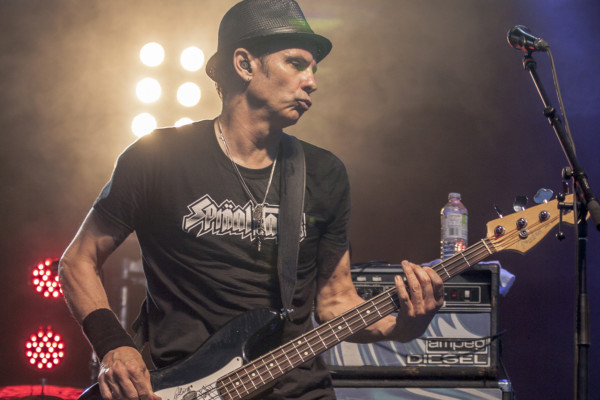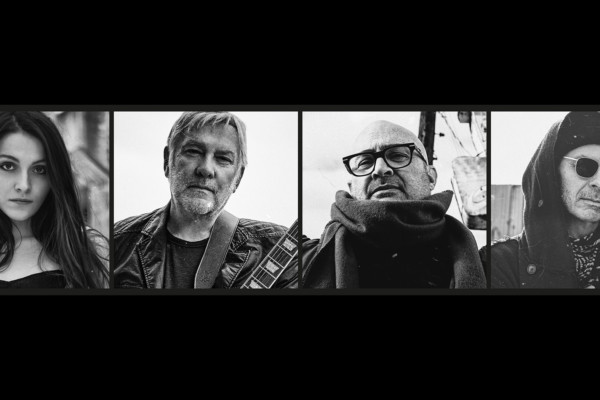Envy of None: An Interview with Andy Curran
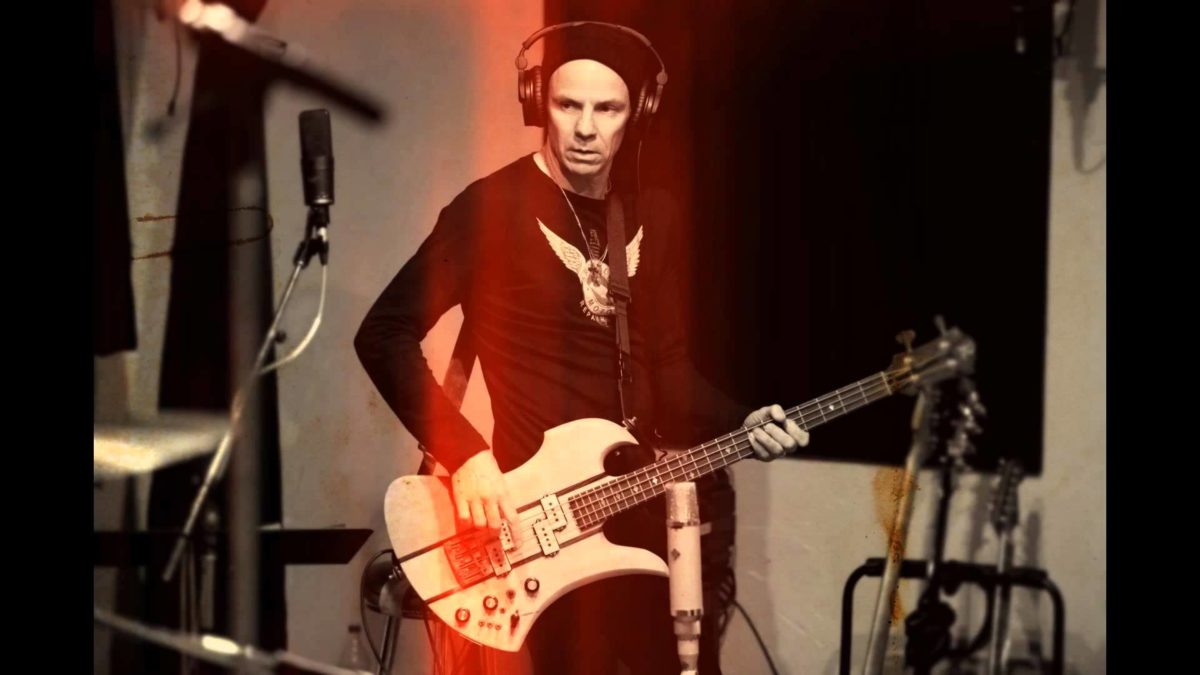
After months of anticipation, Envy of None’s self-titled debut is finally available. The project is a supergroup of sorts that most will note for Rush guitarist Alex Lifeson. However, bassist Andy Curran was the true catalyst of the project, which also includes longtime musical cohort Alfio Annibalini and singer Maiah Wynne, whose magnificent voice ties everything together.
Curran is a veteran of the music scene with decades of experience with Canadian hard rock pillar Coney Hatch as well as A&R work for Anthem Records and many production credits under his belt. Throughout all of his work, he kept his musical juices flowing with a collection of song ideas. A chance encounter with Wynne helped to flesh them all out.
Although Lifeson is on board, Envy of None is nowhere close to sounding like Rush, and that’s by design. Instead, the music takes on more electronic and ambient vibes with downtempo burners that set a heavy groove.
We caught up with Curran to get the scoop on the new project, his bass gear, his love of keyboards, and playing with Alex Lifeson post-Rush.
Envy of None is available now on CD, vinyl and as a digital download (iTunes and Amazon MP3).
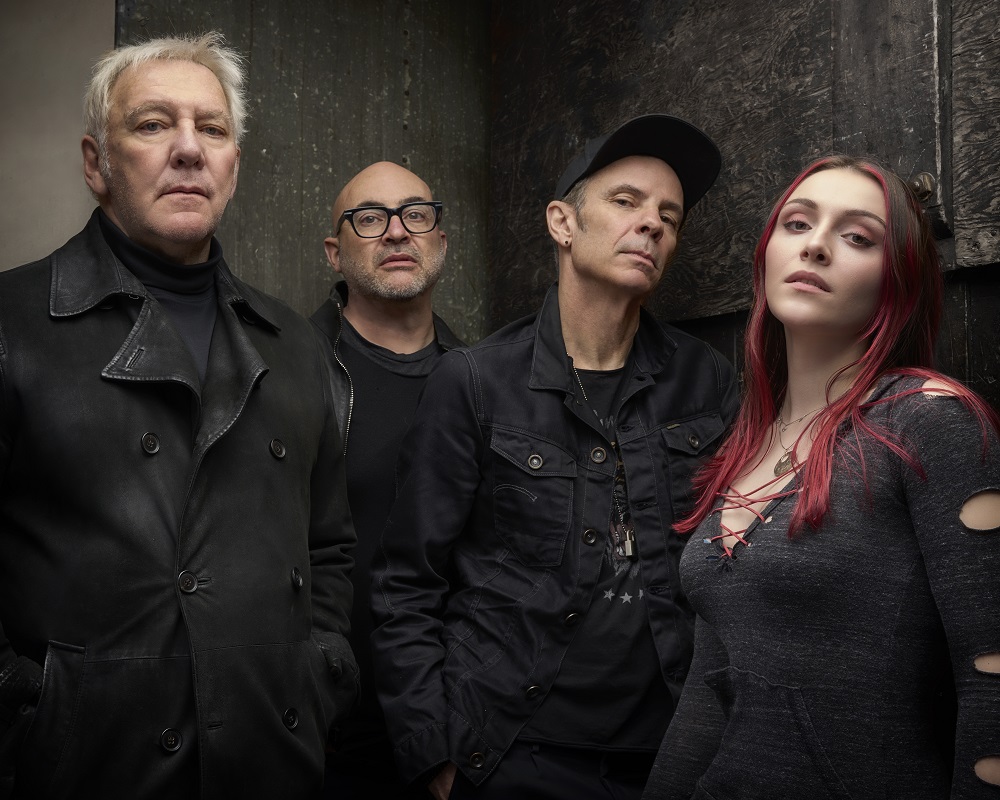
Envy of None seems like such a departure from your previous projects. Can you just talk a little bit about how this came about?
Absolutely, and you are correct, it is a real departure. I would say, certainly, for myself and Alex, but even Maiah Wynne who is our lead vocalist. I got connected with Maiah when I was asked to judge an online talent search. I had a full-time job as the A&R guy for Anthem records, with whom I worked for almost 15 years. Lots of times I would get asked to go to a Battle of the Bands or talent contests and judge, and I really liked doing that stuff. I love giving back and trying to help shorten the ride for young artists if ever I’m given the opportunity to do so. I said, “Yeah, no problem.”
Long story short, some of these winners would get cash and some of them would get recording time or the combination of those, but also a mentoring call. When I had a mentoring call with Maiah, I thought was going to be just giving her some advice about her career in the music industry, having been around the block quite a bit myself.
It was during that call that she said, “Andy, I looked you up on the internet. What about you and I writing together?” I wasn’t really expecting that. I had told her that there was a particular itch that I was scratching. I have a folder on my desktop, and I call it the anti-Drew. A lot of my friends call me Drew, short for Andrew.
I had been writing for a rainy day, a lot of stuff that was basically electronic or industrial or almost ambient. Just a real departure from anything that I’ve previously done. Everybody knows me as an alternative hard rock guy.
I have been in touch quite a lot with Alex Lifeson, and he too had been working on some instrumental stuff that was quite different from Rush. When I sent Maiah some ideas, one of them was a song on the record called “Shadow”. I had a very short two-minute version that I sent her with a few little vocal ideas and some melody ideas and some lyric ideas. She basically ran with it and sent me back some stuff. I was super impressed with what she did and I ended up sharing it with Alex and also my long-term business partner, who’s part of Envy of None.
Both those guys said, “Oh, my God, man, Andy, I think you’ve found somebody really special here.” It was really at that point that the two of them… I didn’t really have to talk them into it, but I got them involved. Alex started writing some guitar parts for “Shadow” and Alfio took it into a studio. He’s a really good mixing recording engineer and he added some layers and mixing and stuff and that was it, man. That was the humble beginnings of Envy of None which is about maybe close to four or four and a half years ago that Maiah and I first met each other. That’s a long answer to tell you. That’s where it all began, bro.
That’s amazing. That’s a pretty awesome story that she was forward enough to say, “Hey, we should work together.”
I jokingly said to a couple of my friends, “That little girl’s got balls the size of Montreal.” She laughed about that and said she wanted to get a t-shirt made up that says “I’ve got balls as big as Montreal” on it.
It was very innocent and naive. She knew nothing about me in terms of how long I’ve been around. Even when I told her that Alex likes he was going to add some guitar on it, I don’t think it really resonated with her. I think she said to me, “Oh my parents are a fan of that band.” She was never really intimidated, which I thought, “Good on you, for being a 21-year-old singer-songwriter from Portland”, basically doing what I call folk Americana stuff. Earlier you said quite a departure for Alex and me, but a real departure for Maiah as well.
That’s why when I looked up her site, everything was a little bit more, folksy organic style, and just really interesting that this all came out of everyone here. I just find that so cool.
It is for sure. It’s not a traditional start of a recording project, that’s for sure.
Did you start with most of the songs? What was the collaborative process like?
Very similar to what I described with “Shadow”, I would say maybe 70% of the project, the seeds of the ideas came from my working demos at home. Songs like “Shadow” or “Liar” or “Dumb” or “Look Inside” – those were all ideas that I was messing around with at home.
The process that we would go through is that I would send the seeds of the idea, and some of them could as short as – I’m not even lying – like 45 seconds to a minute. Some of them were really fully sketched out. I had the full arrangement for some songs, like “Liar”, and usually sent it to Maiah first with some ideas lyrically or melodically and then just said to her, “Run with it.” Once Maiah got her stuff on, she would draft it out again in a demo form. We’d share it with Alf. Alex was very adamant about not really wanting to add any guitar parts until he heard what Maiah was doing vocally so that he could start the dance and weave his guitar parts and his soundscaping around her vocals.
It was all done remotely with the exception of some drum tracks. Maiah came to town early in the project, and we did some drum tracks in Toronto, in Hamilton just outside of Toronto. That was really the only time when all four of us were together early, and the rest of it obviously because of COVID, was done remotely sharing files, all of us working at our home studios and then finishing it off with a mastering engineer here in Toronto. I think the COVID situation actually was a positive one for us because we could all work remotely. Nothing ever left our home studios until we were proud of it and felt that we had done everything that we could do.
People have asked me, “Andy, who produced it?” We all did. I produced the stuff that came out of my studio, same with Maiah, same with Alex, and nothing ever left to go to the next Envy of None member until we were happy with it. Again, a very non-traditional way of working but quite liberating. You didn’t have a producer breathing over you. You didn’t have band members sitting around going, “Why don’t you try a different bass note underneath that chord and see where it goes?” We were just left to our own fruition to develop these songs, and it was really a lot of fun. Zero pressure. We had no label. We had no management. No nothing, we were just doing it all instinctually.
It’s just interesting too that if you’re all putting your own thing on it, but there’s still such a cohesiveness to the album.
Thanks for saying that. Everybody checked their egos aside, and I’ll give you a perfect example of that, specifically with Maiah, For the song “Liar” I told her, “I’ve got a hook line for the pre-chorus and the chorus. Here’s the small lyrical idea that I have. I’m also going to sing it if you like it great. If you don’t just do whatever you want.” Same with Alex when there are a couple of songs where Alex said to me, “Andy, would you write some bass lines for me?” With “Kabul Blues”, “Spy House”, and “Western Sunset”, he sent those over to me and said, “I’d love you to play bass on these.”
I jokingly said, “Well, don’t you know any other bass players?” This is before in Envy of None started. He was sending me these ideas, and I said, “Don’t you have a guy on speed dial whose initials are G.L.?” I’m a massive Geddy Lee fan. He said, “No, Andy, Geddy is writing his book and this is very different, and you’re my buddy, and please do this for me.” I’m like, “Holy crap. Alex Lifeson is asking me to play on some of the stuff.” Again, he would just say, “Play what you feel the song needs,” and everybody was really putting the song first. Including Alex saying, “I’m going to send you guys some ideas of stuff that I’ve done. If you don’t like them just press the mute button.”
It was very interesting how everybody parked their egos, and we all had this meeting of the minds. As I said, [it was] just a really creatively rewarding process and zero pressure, and it’s an overused phrase but it was all quite organic. Everybody just instinctually felt what the songs needed and added them, so that was a lot of fun.
Now, since you did bring him up and seeing as this is Alex’s next thing, a lot of people are going to expect to hear some Geddy Lee things going on. Did you feel any pressure about that? Are you worried about any comparisons?
Well, first off, I wouldn’t even put myself in the same league as Geddy Lee. There was a thought process and a lot of discussions Alex had with me that he wasn’t really… and I mean this respectfully. He said, “This isn’t Rush. I’m not writing guitar parts as I would with Rush. There are going to be Rush fans that aren’t happy with this, that is going to expect so the next Rush sounding project.” He intentionally did not write guitar parts like he would for Rush. He said that was the liberating part of it, that he could step outside that box. A lot of people that are expecting to be slapped in the face with a guitar line like “Limelight” or something they’re not going to get it.
He did a lot of really cool processing with his guitars. [He] flipped them backwards and did acoustic stuff through reverb chambers and was triggering guitar parts with gates to make them very pulsing and rhythmic. Listen, the elephant in the room for me for sure was like, “These Rush fans are going to hear this, and I wonder what they’re going to think of little old Andy’s bass lines.” I intentionally did not want to go head-to-head with Geddy because I don’t have the chops to even go head-to-head with him in a steel cage bass match.
I would say the closest might be “Look Inside”, which has a bit almost like a “Battle Scar” feel to it, but it wasn’t intentional. I didn’t sit down and go, “I’m going to write something that Rush fans might like.” It was a no-go zone for me. I served the song first, and I didn’t want to get too smarty pants. There are some things that I’m very proud of on the record. Like “Western Sunset”, I played fretless bass, that might be one of the few times I’ve ever played fretless bass on a project.
Geddy Lee gave me as a present a Jaco Pastorius reliced Jazz Bass, and it meant a lot to me. I did step outside my comfort zone a little bit but, man, when it came to those intricate, challenging Geddy Lee standard bass lines, man I was like, “No way, I’m not going there.” Nor do I think the material called for it, by the way, It’s very traditional rhythm section stuff. I tried to serve the song first and it was less about “listen to me.”
When I was asking you about the collaborative process I could tell that you were writing some of the pieces because the bass lines are so evocative. It seems like they build off of that and “Look Inside”, by the way, struck me more as Cliff Burton than Geddy Lee. The tone on there is so killer. I really love that line and just the snarling sound you’re getting.
I do get the Cliff Burton tonal analogy that you’re talking about. Some people have asked me about that and jokingly I’ve told him that’s what happens when you go into your studio and you’ve got a nice big full glass of red wine and it’s late at night.
I’m pretty good friends with the people at Tech 21, and I’ve had a relationship with them for quite some time. I actually can proudly tell you that I introduced Geddy Lee to the folks at Tech 21 and they’ve had a really long fruitful relationship. I recently got a dUg Pinnick Tech 21 pedal that I fell in love with.
It’s one of the very few pedals that, even when I play live, I put through my Ampeg SVT head and 810 cabinet. It’s just bass on steroids, and so it’s got quite a nice growl and overdrive stage to it. I really push the envelope.
[For “Look Inside”,] I brought out my Rickenbacker. I’ve got a 1983 4003 Rickenbacker Bass. It’s as close as you can get to the 4001. I distorted the crap out of it. I doubled the bass line throughout the entire song, left and right with a stereo split on it. It’s got quite a dreamy feel to it, but it isn’t the only time I did that. On “Liar”, I completely did an overdriven bass track on that.
I’m a big fan of fuzz bass, probably from years of listening to Geezer Butler and Jack Bruce, and Dale Peters from James Gang. These guys have that really overdriven, aggressive bass tone. Same with Glenn Hughes of Deep Purple. I love that because it doesn’t really sit where bass traditionally is, with that nice warm sound and just laying underneath the rest of the tracks. It becomes more of the featured instrument. I’m guilty as charged in overdriving the bass. I jokingly said the world needs more fuzz bass, and I scratch that itch on this record, buddy.
I’m a closet guitarist, too, so I can puck hog some of that sonic area of where guitars sit. I often get the stink eye from guitarists going, “Well, now I can’t put any distorted guitars over this because you’ve taken up that register.” I’m like, “Yes, sir. Yes, I have.”
The other one that I really loved your tone was on “Enemy”. Is it like a bit crusher, something on that? It just sounds so gnarly. Was it a similar setup?
Actually, it’s quite different, and I’m glad you brought that up because I wanted to cover this subject with you. I think it was a combination of a couple of different things like going back to some of my early bass roots. When Coney Hatch was doing our third record, I was really influenced by Van Halen. If you think about some of those Van Halen records in the early to mid-80s, they started putting a lot of bass keyboards on there.
Same with Patrick O’Hearn from Missing Persons. There were a few guys that would do that. I bought myself a set of Taurus Moog pedals, and I bought myself a Moog source. On that Coney Hatch Friction album, I was working with Max Norman, and we would double some of my bass lines with bass synthesizer keyboards. I’ve always been really intrigued by that. Im a big Depeche Moog fan and I even like Devo.
On Envy of None, I had spent quite a bit of time and money just building up what I’m going to call my analog synth patches. I worked with the guys at IK Multimedia, and also went out and bought some Arturia stuff, so that the bass sound that you’re hearing on “Enemy”, and quite a few other tracks, is bass keyboard. There are a bunch of bass keyboards in where I just felt sonically it might be interesting to see where the bass line went as opposed to using electric bass.
It’s a different feel. I’m not a super prolific keyboardist, but when you have those fat, analog ‘80s sounds… Or even Rush’s sounds, you think about things like “Tom Sawyer”, where Geddy would fill out that bottom end, and so on. On “Enemy”, I went for a real old-school ’80s synthesizer bass sounds. That sound I believe is from my Arturia library, which is probably based off a Moog sound. I had a lot of fun playing bass keyboard lines throughout the whole record. It’s a combination of electric bass and that.
So there are both in there?
Yes. I’ll say this reluctantly, but sometimes when I was working on these tracks, I would get a little bit bored going, “Ah, man, I’m just not inspired right now. I’m going to see where the bass line goes.” I’d plug in my Soft Synth package and try some bass keyboard lines on it. I have a nice collection of basses that I use, I used my old 67 Hofner Beatle Bass on some of the tracks, I use my Jaco bass and my 4003, but there were just certain tracks that I felt might need some big fat analog, almost bordering on New Wave keyboard sounds.
The record is a real combination and mixture of those, and sometimes I would actually use them on the same song. In the middle of a song, I’d use the bass keyboard but just go right back to the electric bass on some of the other stuff. I had fun scratching that itch. I know it’s not really bass guitar stuff, but I still consider it, especially the Moog Taurus. I was always a big fan of that low stuff, and you can’t get that same feeling within with electric bass on it. That’s why I did a lot of keyboard stuff on it too.
It’s still in the bass register, and pardon me, but it’s all in the same world to me. I think Patrick O’Hearn of Missing Persons is probably the biggest inspiration there for me. When I saw Missing Persons early and watched him play electric bass and fretless bass and playing bass keyboards and just driving that with Terry Bozzio. Then just following Patrick’s career and watching what he did, that might have been my foray into the ambient stuff, which I wear my influences on my sleeve for Envy of None. I’m a big Patrick O’Hearn fan. I think he’s an amazing musician.
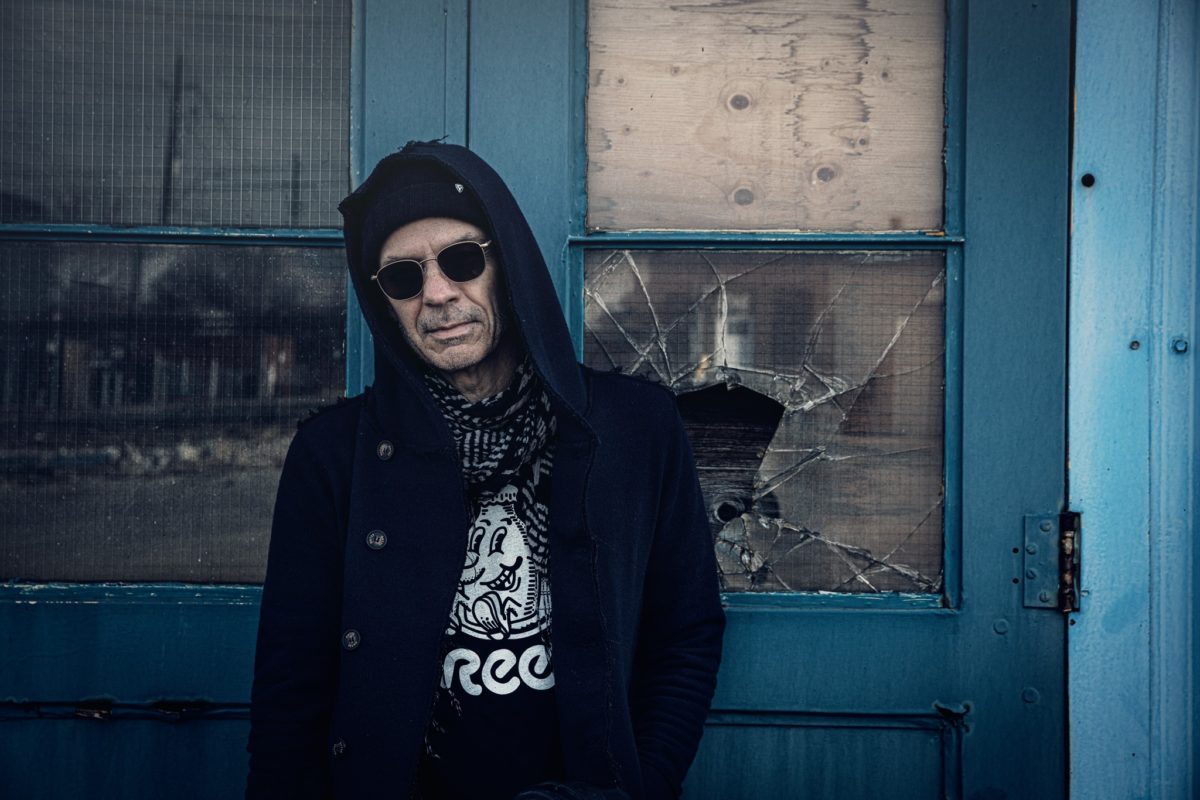
Are you planning on doing any Envy of None shows or touring at all?
Well, it’s certainly come up a lot. That seems to be the number one question. Because the way this project was born, it wasn’t like that old traditional, “Let’s put a band together and go in the rehearsal studio, and let’s go shop a deal. Let’s go on tour after this.” There were none of those conversations happening. It was four musicians collaborating, having fun. There was no discussion while we were doing this record saying, “Hey, we should go out and play some live shows.”
As a matter of fact, there was no discussion about, “Hey, what are we going to do with this stuff? Are we going to send it to some record company?” Long story short, here we are, we’ve got a label in the UK, Snapper, that is really behind us. We have left it open. If lightning in a bottle happens, and there’s a lot of people that want to see this thing, I know Alex is open to doing a handful of shows. That guy spent over 40 years on the road, so he’s in no hurry to get back out there and do the touring grind.
I’m next in line. I spent a lot of years on the road, and I enjoy that two hours or one hour on stage, but not so much the grind of driving all over Hell’s half-acre on it. I think the short answer is we’ll see. The long answer is it was more of a project less of a band. We’re just going to play this thing out and see where it goes.
I know you’ve done your fair share of the grind too. Speaking which, what’s going on in Coney Hatch, what’s going on there?
Well, ironically, we are getting together for a couple more shows. We’ve got a show next on April 22nd just outside of Toronto. We had a lot we had four or five shows canceled during COVID. There was a resurgence in the interest of the band probably around 2017, maybe when we released Coney Hatch Four. We’ve been in the studio, we recorded a couple of new studio tracks, which are very, very straight-up-the-middle, balls-to-the-wall, two-guitars-bass-drums, stuff that respectfully, I think we can do in our sleep now because we’ve been together for so long.
We recorded a show in Germany a couple of years ago, and it turned out really well. We’re talking about releasing it as Live from Ludwigsburg and like I said two new studio tracks, but we’re weekend warriors. If we do five or six shows a year, that’s a very busy year for Coney Hatch. We all get along really, really well but it’s more like old guys getting together for a beer league hockey game, and we love hanging out. We get together for shows, and it’s a nice excuse for four friends to get together again.
That’s beautiful, too. What are you doing with the rest of your time? Are you engineering now or are you producing?
I’m right in the middle of producing a couple of songs for another Canadian hard rock band called Sven Gali. They’re a ’90s hard rock band. I’m about two songs deep on that project.
I’m mucking around with a lot of stuff with Alex. He and I are having a lot of fun writing music for film and television, I believe it or not. We just wrote music for an Amazon series called All or Nothing: Toronto Maple Leafs.
I’ve got a couple other side projects going. I had been working on a record with Alfio, the working title is called Daredevils Incorporated. I’ve got a couple things going with that right now.
I’m trying to keep busy creatively because I spent almost 15 years working with Rush and their management company and their label. It took me away from maybe just being as busy as I could be as a musician. I’m really enjoying that part, buddy. I think I’ve got a good work-life balance happening now finally.
My understanding is that most people cannot say that.
It’s one of the few nice things that’s come out of COVID. To be able to get that balance has been pretty rewarding. I feel really lucky and I feel blessed that I’ve got this opportunity and people are still interested in hearing what I’m up to. Let’s make no mistake about this. I really feel like Alex, he’s the heat-seeking missile for Envy of None. I think we would be a well-kept secret without Alex being in it, but he’s so proud of what he’s done with us. To be in a project and collaborating creatively with Alex is something I never would’ve thought would ever come up with me. To have him pull me out of the dugout and work with him has been just like a bit of a pinch-me moment.
To wrap up, what bass gear do you run?
I’m such a geek when it comes to bass guitar and gear and everything. I’ve had so many really great people support me, and I’d like to give a little shout-out, obviously to my friends at Tech 21. I’ve been using Bass Boomers since the 80s, and my friends at GHS have been so supportive. I’m a die-hard Ampeg SVT guy. I have not changed my rig since the ’80s. The people at Ampeg have been very kind to me, my friends at IK Multimedia and Arturia. Just a big shoutout to everybody who’s been helping me along the way, and my friends at Fender too, man. Billy at Fender has been so supportive, even though most of my conversations have been around working with Geddy Lee. Traditionally, they’ll say, “Okay, cool, Andy, but what are you up to and how can we help you?” I want to thank everybody for decades of supporting me. Being able to expand tonally has been a lot of fun with Envy of None.
Effects:
TECH 21 dUg Pinnick pedal + a TC electronic Corona mini Chorus pedal
Strings:
GHS Bass Boomers 105- 45
Bass Guitars:
2019 Loucin G bass – 59 fender slab style model – Fender neck -Loucin body- veneer top from the Legendary El Mocambo in Toronto
1983 4003 Rickenbacker bass
2001 Fender Custom Shop Jaco Pastorius Relic Fretless Jazz Bass
1967 Hofner Beatle bass + GHS Black Nylon flat wound strings
1982 BC Rich Mockingbird short scale bass

